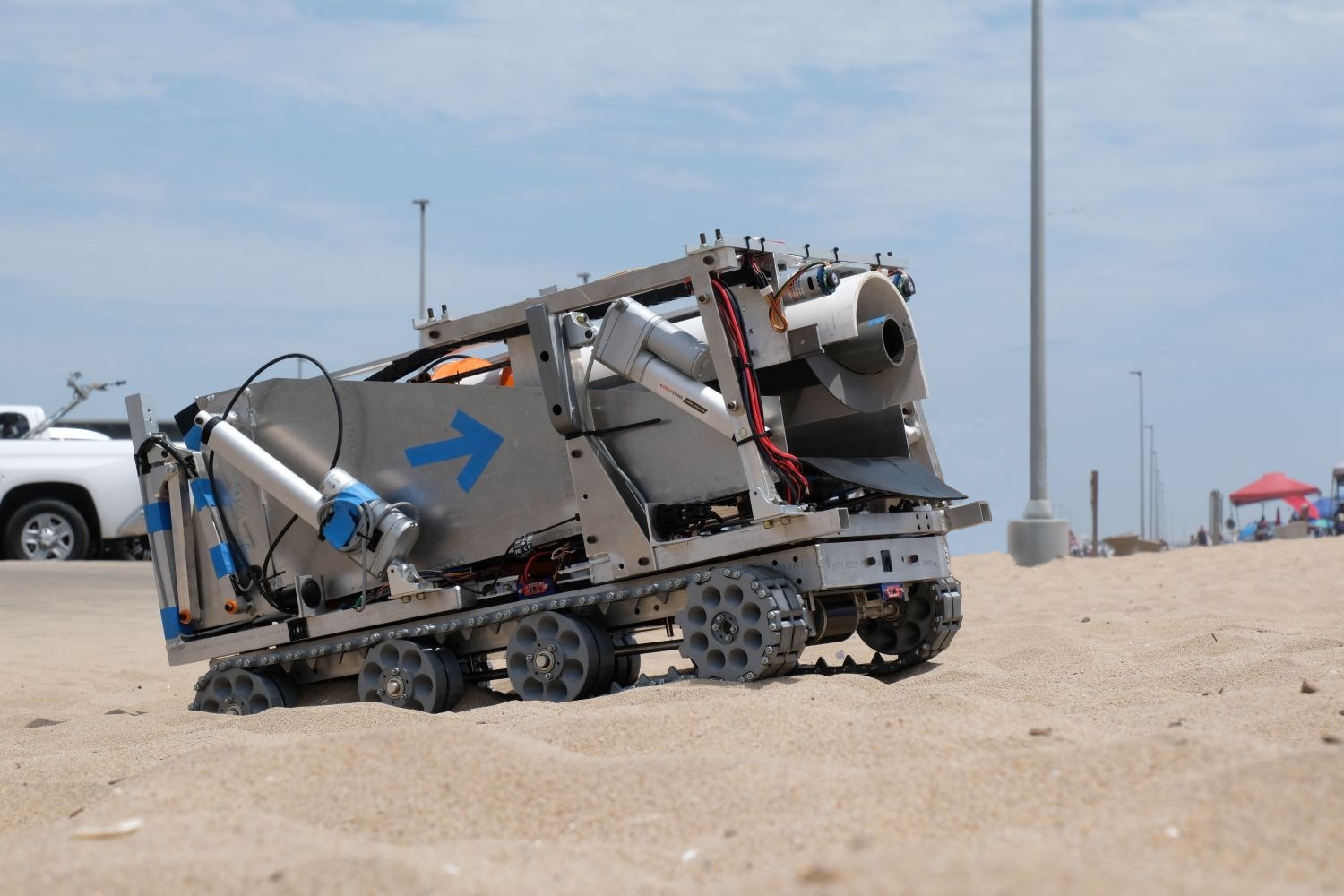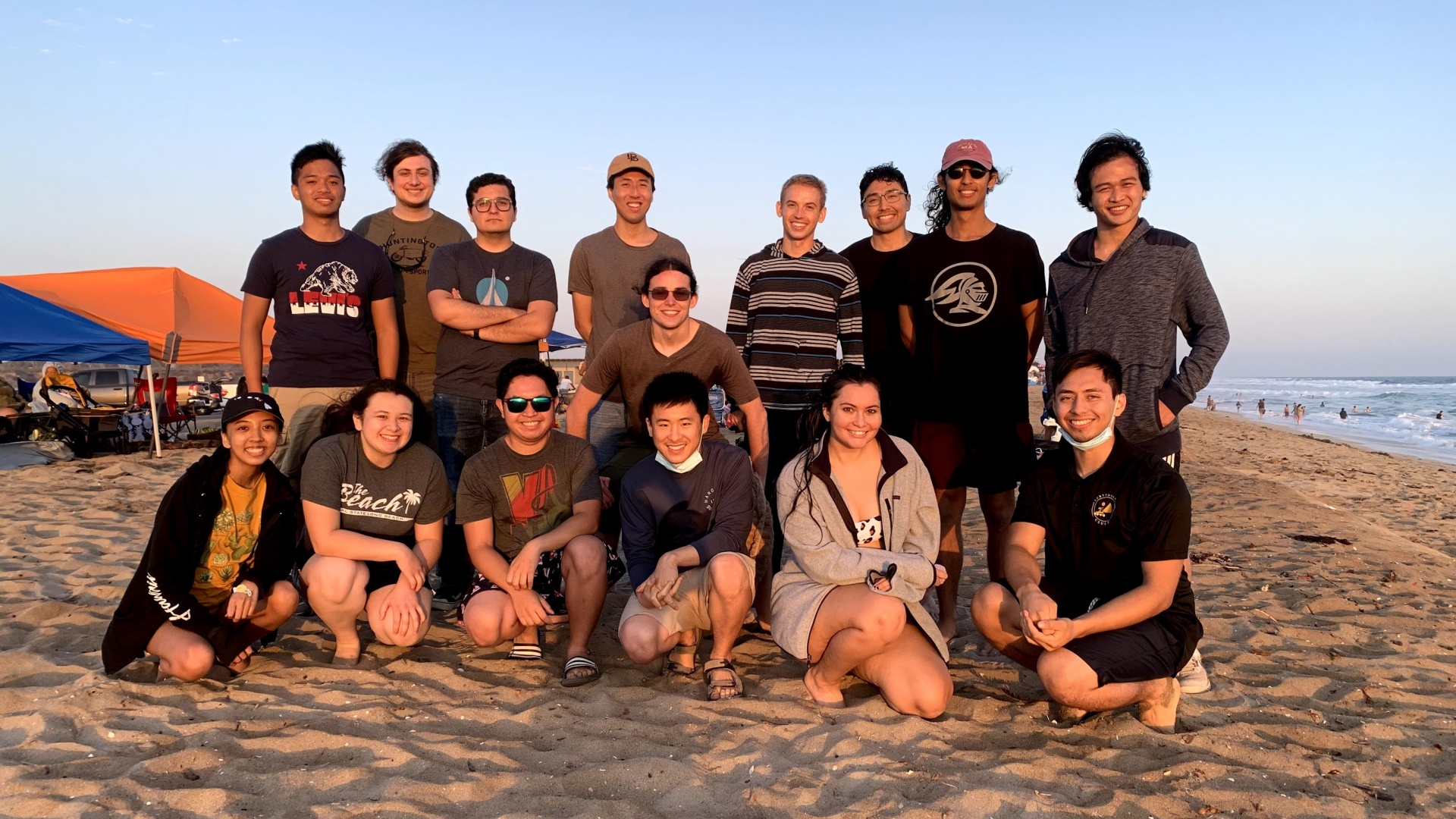CSULB Lunabotics Team Places First in State
In its third endeavor in the NASA Lunabotics Competition, CSULB’s Lunabotics Team ranked first in the state and 13th nationwide among 52 teams. The competition aims to train university students for NASA systems engineering by designing, building and operating a lunar excavator prototype.
The Lunabotics Competition is one of many student challenges designed to emulate real aspects of the ARTEMIS project, which aims to have the first woman and the next man land on the moon by 2024 and establish a lunar base. Another goal of ARTEMIS is to extract local resources sustainably from the surrounding lunar landscape, specifically regolith, so they don’t have to be transported from Earth.

To comply with COVID-19 safety protocols, the Long Beach Lunabotics team wore masks and practiced social distancing. Initial construction of the rover was at public parks. Blueprints of the rover were created in Solidworks and distributed through a cloud-based file sharing program called GrabCad. Meetings were held virtually via Discord, and testing took place at the beach.
"It was hard to assemble the rover because we had such limited access to the lab and in-person meetups. We had to assemble it at a member’s house and store it at various peoples’ houses too,” said Jessica Le, the Team Manager.
During the year, there was a strict limit on the people allowed lab access. Even when permission was granted, only two people could go into the lab for a few hours under supervision.
Assembly of the rover was also impacted because multiple members lived in Northern California during the pandemic, and health department regulations restricted the ability of other team members to gather.
In a normal year, teams would have traveled to the NASA Kennedy Space Center in Florida to demonstrate their rovers. However, during this year’s competition, teams virtually presented to a panel of judges.
The team is no stranger to adversity. During its first competition in 2018-19, a government shutdown forced the competition to move to Alabama, where California state funds could not be spent.
The team’s rover that year was four-wheeled and equipped with a bogie system, bucket ladder, and a conveyor belt depositing system. The rover was completely revamped for 2019-20, and the competition’s name was changed from Robotic Mining Competition to Lunabotics.
The redesigned rover used a tank track for traversing terrain, an auger to excavate dirt, and a dumper to collect and deposit regolith.
Things were looking good. The team was booking hotel rooms and raising money for airfare to Florida. Then COVID-19 hit. When the campus closed, fabrication and assembly came to a halt, then NASA canceled the competition.

The 28 members of the team represent a variety of engineering majors, including:
Aerospace Engineering: Margaret Malinao*, Lillian Vera
Computer Engineering: Maurice Komara (Co-Programming Lead), Anthony Le*, Aiden Little
Computer Science: Nathaniel Ventura (Co-Programming Lead), Jessica Le (Team Manager), Rushil Prajapati (Business Lead), Angelo Ryan Soriano (System Engineering Lead), Paul Clark, Rami Iskender, Aveline Villaganas, Eric Wang
Electrical Engineering: Nathan Ince (Electrical Lead), Erik Perez (Outreach Lead), Andrew Stumpf, Jimmy De La Torre
Mechanical Engineering: Abraham Serrano (Mechanical Lead), Samantha Sany (Safety Lead), Steve Fang*, Dan Dao*, Oscar Brown-Velasquez, Derek Liu, Victoria Nguyen
Other: Samantha Villa Floran, Jared Rogers, Brenden Smith
The team presented their rover in July. The team is recruiting new members for the upcoming season. For more information, visit https://beachrmc.com/. You can follow the team on Instagram @csulb.lunabotics
*additional new leads for the upcoming season





